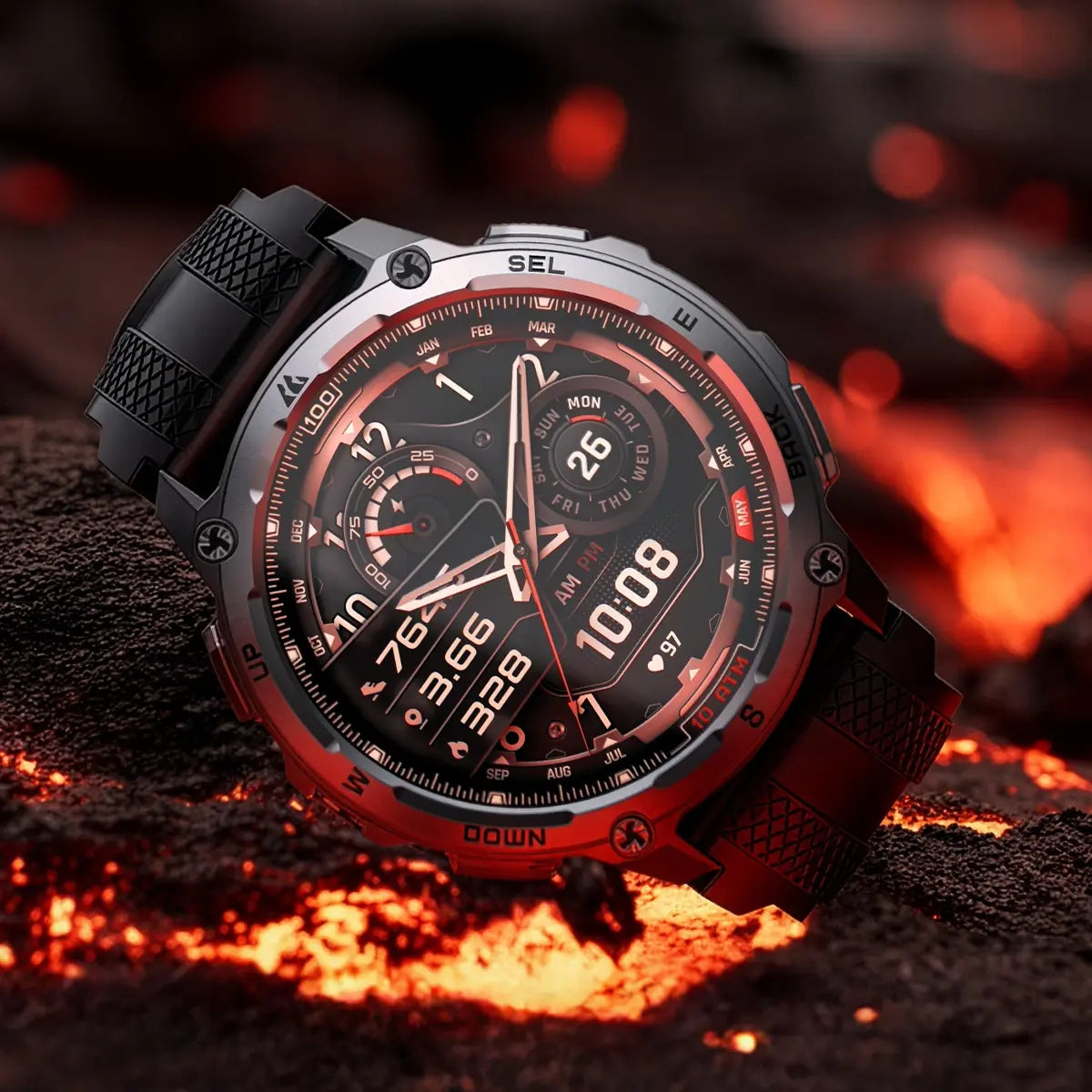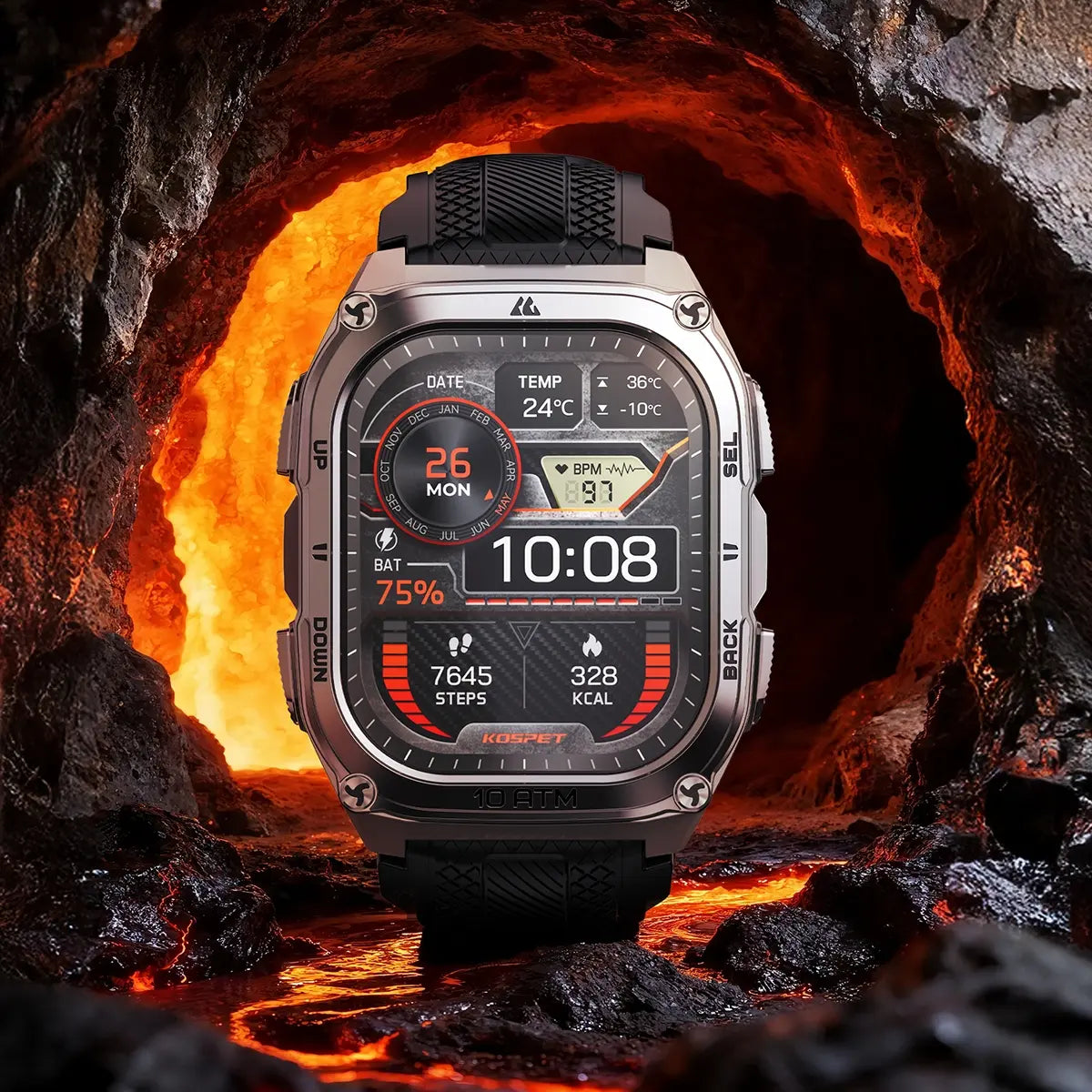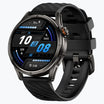When shopping for a watch that can handle water, it’s easy to get confused about the terms "diving watch" and "regular waterproof watch." While both are designed to handle water exposure, they are made for very different purposes.
In this article, we’ll break down the real differences between the two types of watches, so you can make a more informed choice based on your needs. The goal is to help you understand not just the technical specs, but also why those specs matter in use.
What Defines a Diving Watch?
A diving watch is more than just a waterproof watch. It’s specifically designed to perform under the extreme conditions that divers face underwater. These watches are built to survive the pressures of deep dives, whether you're in shallow or deep waters.
The main feature that sets a diving watch apart is its water resistance. Most diving watches are rated for at least 200 meters (660 feet) of water resistance, meaning they can handle the pressure at those depths.
For reference, 100 meters (330 feet) is generally considered the minimum for a diving watch, while anything less would not be safe for diving.
A diving watch also needs to meet certain standards, such as the ISO 6425 certification, which ensures the watch is up to the task of withstanding long durations underwater, exposure to saltwater, and changes in pressure and temperature.
These features make a diving watch far more durable than a regular waterproof watch, which is not designed to handle the specific demands of diving.
What Is Considered a Regular Waterproof Watch?

On the other hand, regular waterproof watches are made for less extreme environments. These watches are built to resist water in more common situations like washing your hands, being caught in the rain, or swimming in a pool.
Their water resistance is usually measured in meters or ATM (atmospheres), but these ratings don’t suggest they are suitable for deep-sea diving.
Waterproof watches often have ratings like 30 meters (100 feet), 50 meters (165 feet), or 100 meters (330 feet). These watches can handle splashes and brief immersion in water, but they are not made to withstand the pressure you’d encounter underwater beyond these depth ratings.
For instance, a 30-meter rated watch is fine for light swimming, but it wouldn’t be reliable for even shallow dives.
Key Differences Between Diving Watches and Regular Waterproof Watches
Water Resistance and Depth Ratings
The depth rating is where the key difference lies. Diving watches have a much higher depth rating than regular waterproof watches, as they need to endure the pressure that comes with being deep underwater.
Diving watches are often rated for 200 meters or more, while regular waterproof watches typically top out at 100 meters.
Here’s an important note: the depth rating doesn’t just indicate how deep a watch can go. It also reflects its ability to handle pressure.
A diving watch must be able to resist the pressure at those depths for extended periods, whereas a regular waterproof watch may be able to withstand water at shallow depths for only short amounts of time.
Materials and Construction
Diving watches are built to last under harsh conditions. They are made with corrosion-resistant materials, such as stainless steel, titanium, or ceramic, which help protect the watch from saltwater damage.
The glass is typically sapphire crystal, which is scratch-resistant and incredibly durable, ensuring that it won’t easily shatter when exposed to pressure.
In contrast, regular waterproof watches are often made from lighter materials such as plastic or aluminum.
They are built to handle water exposure, but they won’t stand up to the wear and tear of diving. For example, the glass on a regular waterproof watch may be less durable, and the case might not be as tough or tightly sealed.
Bezel and Functionality
One of the key features of a diving watch is the rotating bezel, which helps divers track the amount of time they've been underwater.
This is important because divers need to be aware of their dive time to manage oxygen levels and ensure their safety. The bezel is easy to use, even with thick gloves on, and it’s designed to only rotate in one direction, so you can’t accidentally overestimate your dive time.
Regular waterproof watches typically don’t have a rotating bezel. While they may have other features like a date window or a stopwatch, they aren’t equipped with the specialized functions needed for underwater timing. This lack of functionality makes them unsuitable for diving beyond the shallowest depths.
Resistance to Extreme Conditions
Diving watches are designed to resist extreme environmental factors such as saltwater, extreme temperatures, and pressure changes. They are built to endure these conditions without losing their waterproof abilities or other essential functions.
Regular waterproof watches, however, aren’t designed to handle these kinds of stresses. They can handle short-term exposure to water but can’t withstand prolonged exposure to saltwater or the kind of pressures you’d face during deep dives.
When Should You Choose a Diving Watch Over a Regular Waterproof Watch?
If you’re planning on diving or engaging in any activity that involves being submerged for long periods or at significant depths, a diving watch is the better option. The higher depth ratings, robust build, and specialized features like the rotating bezel make it a much safer and more reliable choice in these situations.
However, if you’re simply looking for a watch to wear while swimming or running in the rain, a regular waterproof watch will suffice. It’s important to know your needs before choosing a watch. If diving is not part of your plan, then a regular waterproof watch will likely meet your needs at a much lower cost.
Can You Use a Regular Waterproof Watch for Diving?
It’s not recommended to use a regular waterproof watch for diving. While these watches are rated for some water resistance, they aren’t made to withstand the pressures of deep water.
Using a regular waterproof watch for diving could result in water damage, and the watch may fail to function properly under the stress of higher pressures. Even if the watch says "waterproof," it doesn’t mean it’s made for diving—it’s just built to resist water to a certain extent.
Conclusion
When deciding which watch is right for you, it’s important to consider your activities. If you’re serious about diving, investing in a diving watch is a wise decision.
If your needs are more casual, a regular waterproof watch will do the job just fine. Always make sure you choose the right watch for the right situation to ensure that it works as expected and lasts for a long time.
FAQs
What is the difference between a diving watch and a regular waterproof watch?
A diving watch is built to withstand deep-water pressure and harsh conditions, while a regular waterproof watch is only suitable for light water exposure, like swimming or rain.
Can I use a regular waterproof watch for diving?
No, regular waterproof watches are not designed to handle the pressure and conditions of deep diving and could get damaged under those circumstances.
How deep can a diving watch go?
Diving watches are typically rated for at least 200 meters (660 feet), ensuring they can withstand the pressure of deep dives. Regular waterproof watches usually have a much lower rating.















Deja un comentario
Este sitio está protegido por hCaptcha y se aplican la Política de privacidad de hCaptcha y los Términos del servicio.